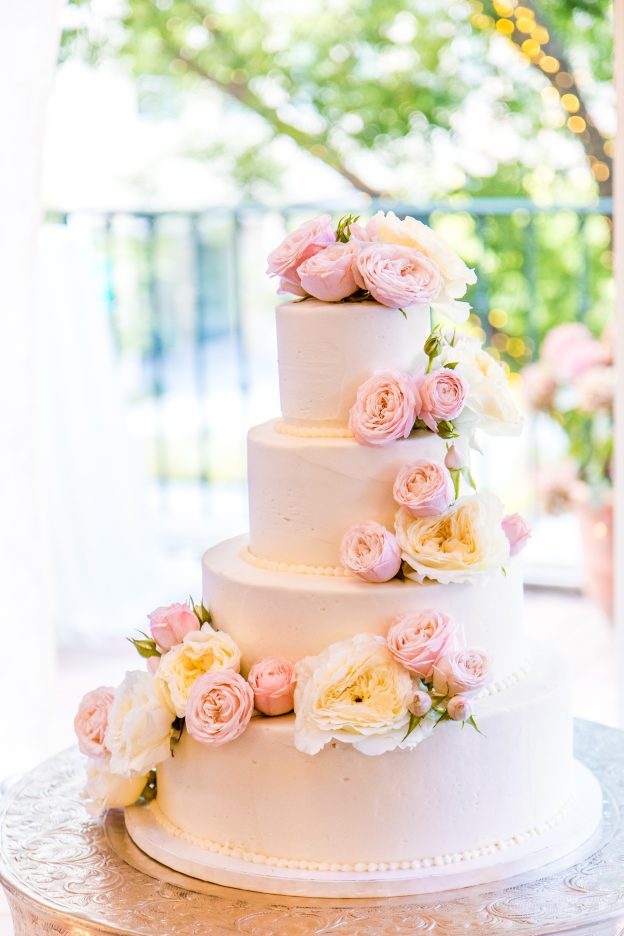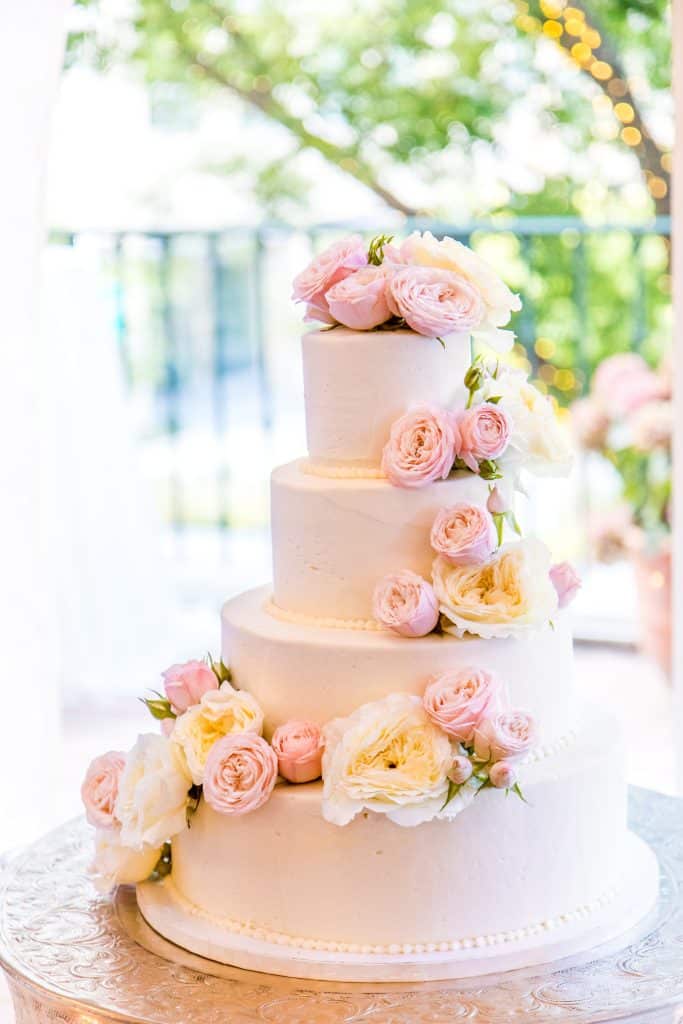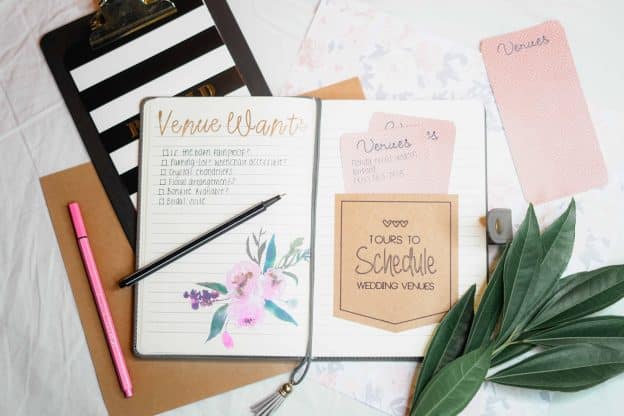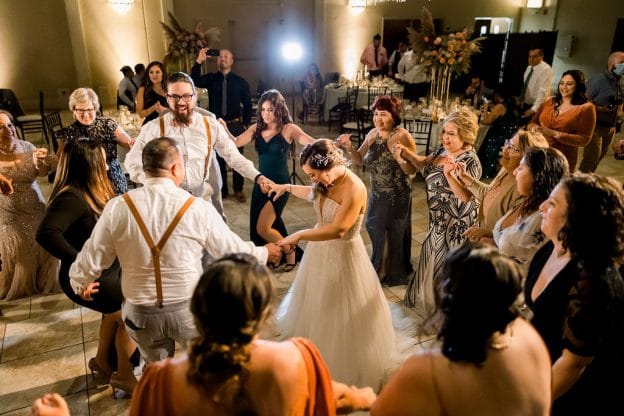
Many modern couples are attracted to the DIY movement as a cost-effective and creative solution for their special day. If you’re considering designing your wedding cake, it’s worth weighing the pros and cons first. When it comes to DIYing your wedding, it’s easier said than done. While crafting is a great way to add personality, it’s time-consuming and exhausting. With a never-ending to-do list, you and your partner may struggle to balance DIY projects with your daily lives.
Cakes are an age-old tradition, representing prosperity, luck, and fertility. So whether you opt for the traditional route or not, a tasty treat is a must-have. But taking on this responsibility may not be the right call. Even if you’re skilled in the kitchen, your wedding is not the time to worry about whipping something up for your guests.
Do you need help deciding between DIYing your wedding cake and hiring a professional? If so, here are some vital points to consider before making a final decision!

Risks of DIY Wedding Cakes
Designing a stunning wedding cake takes years of experience and goes beyond pre-made cake mixes. While there’s nothing wrong with using a grocery store cake mix for a casual dinner party, your wedding cake deserves to be memorable. Every detail from your big day matters, including your dessert!
If you’re not a professional baker, don’t underestimate the work it takes for a showstopping result. The meticulous process may include the following:
- Pairing cake and frosting flavors
- Nailing the cake and frosting texture
- Assembling structurally sound tiers
- Evenly spreading the frosting
- Adding decorative details, like flowers and icing patterns
This method may require one too many steps for you, especially leading up to your celebration. Instead, let the pros work their magic, so you can enjoy time with your loved ones.
To ensure your cake is fresh, you must bake it the day before the wedding. But between your rehearsal dinner and connecting with guests, you likely won’t have time to bake and decorate, let alone deliver it to the reception space on the day of. Plus, if you intend to incorporate other DIY projects into the mix, you’ll feel exhausted before you walk down the aisle.
Another critical factor is allergies. If guests have dietary restrictions, like gluten-free or nut allergies, it’s not worth the headache or risk of making your own dessert. Instead, let a baker take charge and attend to everyone’s health needs. They have experience using alternative ingredients and baking for large groups with dietary preferences. Bringing an expert on board will remove this stressor from your plate and ensure everyone is properly cared for.
Perks of Hiring a Pro Baker
A professional has worked with flavors for a living and can develop diverse pairings you may never consider. So rather than experimenting in the kitchen and dealing with decision fatigue, let your baker take the reins on this one. They will devise delicious choices you can taste and select as a final contender.
Timing also plays a significant role here. While you’re getting ready, your baker can arrive at your venue and set up your cake based on your reception start time and weather. In contrast, the DIY approach risks the quality of your cake. For instance, you don’t want your dessert melting in the corner while you prepare for your celebration. It’s an easily avoidable outcome with the help of a specialized vendor.
A pro baker excels in designing cakes using balance, proportion, and scale. Excellent bakers have studied these concepts for years and can apply them to your cake request. Share your preferences, show reference images, and watch your dream cake come to life.
Finally, an industry expert will collaborate with your team. For example, if you want to include flowers in your design or incorporate video mapping, you can expect your baker to work closely with your florist or lighting designer for a stunning finish.
Invest in Delectable Flavors
Your special day is a once-in-a-lifetime experience. Celebrating this significant milestone is a financial investment that deserves love and care. While saving a few bucks in your budget is tempting, it’s also important to honor your vision.
Flavors evoke powerful memories, and your wedding cake is something you’ll want to cherish for years to come. In addition to reminiscing about your ceremony and vows, you can savor the sweetness from your big day too.
If you’re searching for the perfect Livermore cake vendor, get in touch with us, so we can connect you with an excellent baker who will create something magical and delicious!
Read latest post

When you picture your wedding day, you may envision a magical scene unraveling as you walk down the aisle. That’s the ultimate dream – seamless and beautiful. But after hearing stories about wedding disasters, you may feel anxious about your special day. What if something goes wrong and ruins the event? What if the entertainment […]

Once engaged, the excitement starts to build and most couples eagerly anticipate the day they get to say “I do” in front of their friends and family. But curating the guest list can be challenging — deciding who should and shouldn’t be invited can be an emotionally draining experience. If this resonates with you, don’t worry! […]

It’s easy to get caught up in beautiful design and aesthetics when planning your wedding. However, it is essential not to lose sight of the logistical side of it — namely, your floor plan. After all, how can you enjoy all of the lovely decor if guests are packed together like sardines and caterers are […]